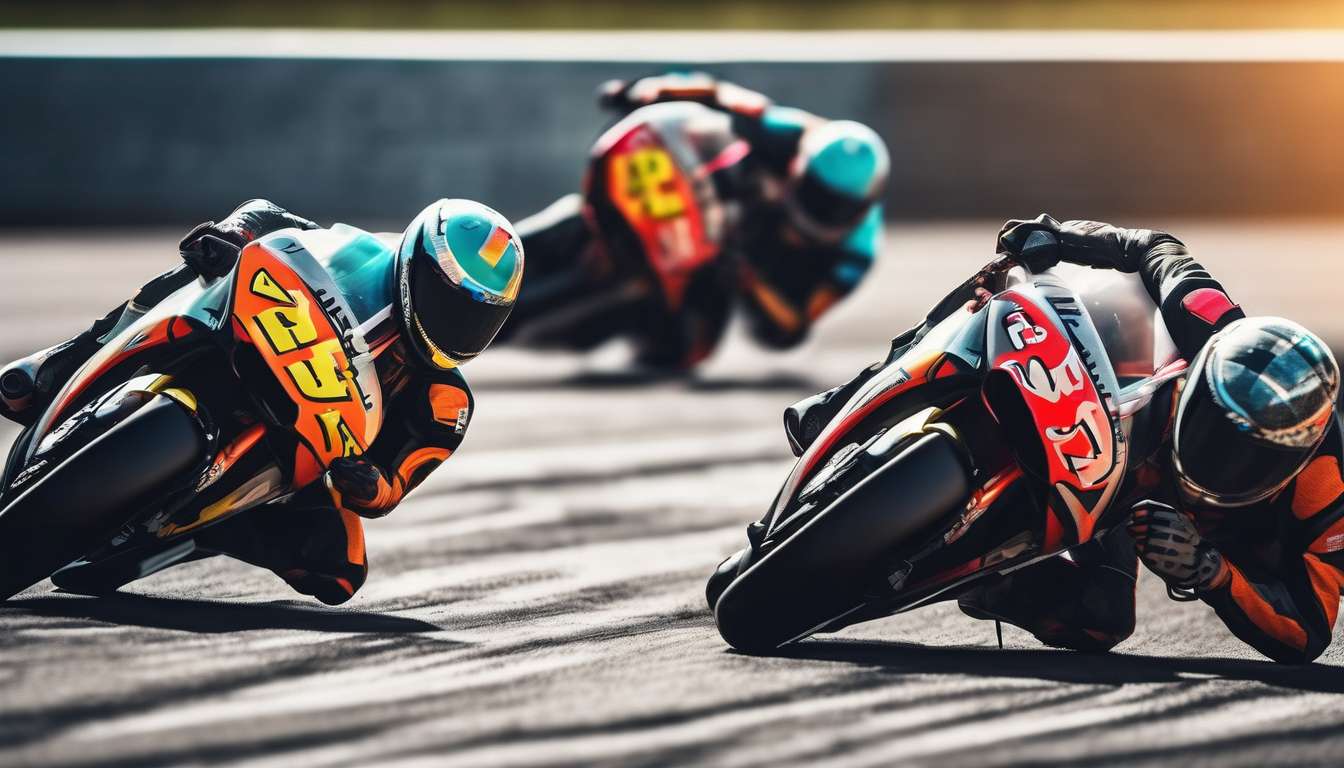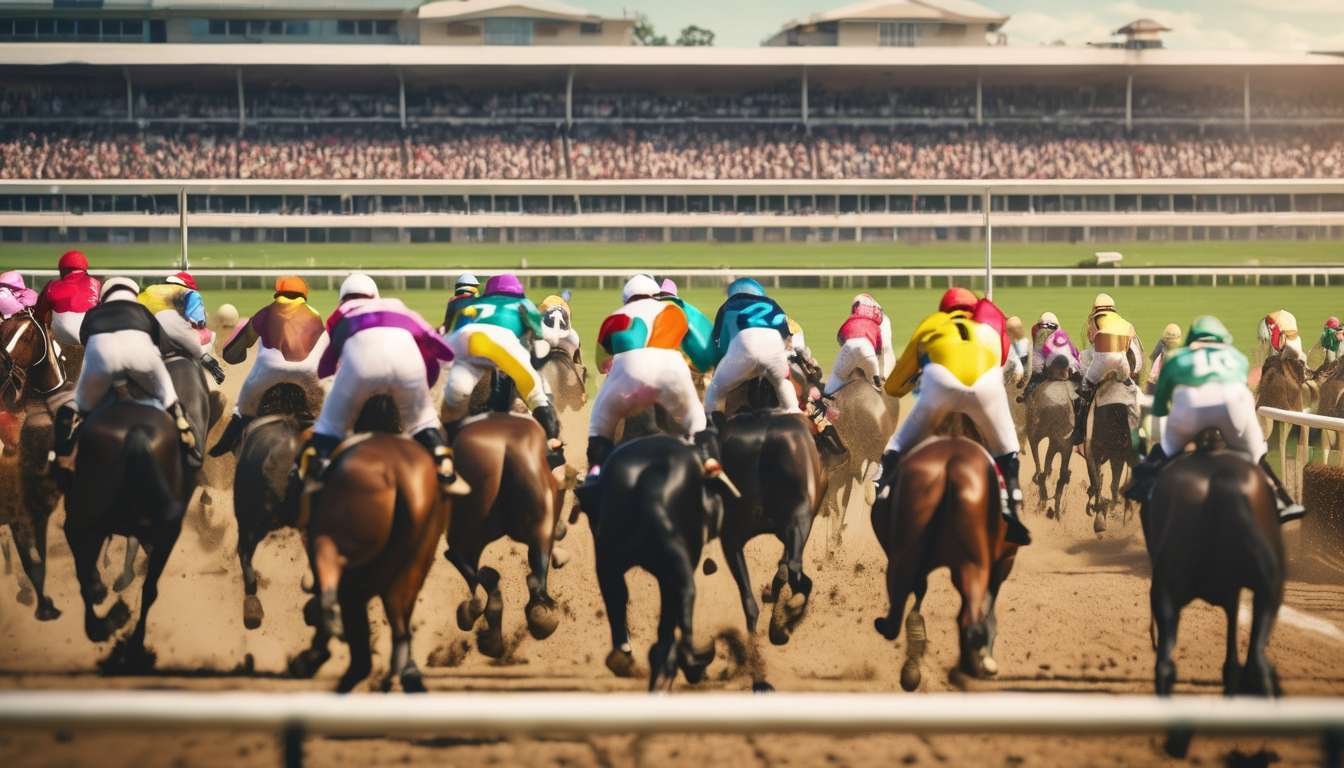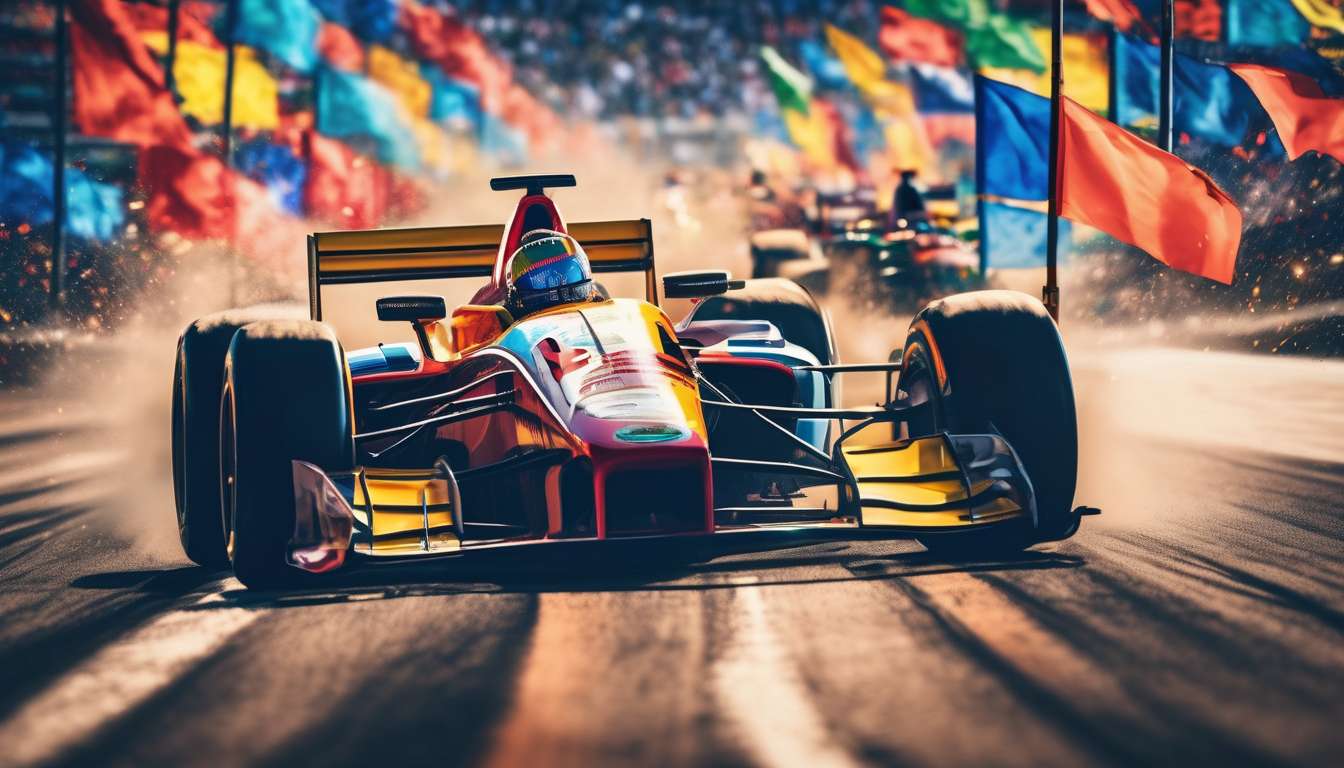In the exhilarating world of modern sport, we find ourselves constantly pushing the boundaries of human capability, driven by the thrill of competition and the pursuit of excellence. Yet, alongside the glory and triumph, there lies an inherent risk: racing injuries.
As athletes, coaches, and enthusiasts, we understand that safety is paramount. It’s our shared responsibility to mitigate these risks through innovative safety measures and technologies.
Over the years, we’ve witnessed significant advancements in:
- Protective gear
- Training protocols
- Emergency response strategies
All these advancements are designed to safeguard our athletes while preserving the essence of the sport we love.
By examining these developments, we aim to highlight the collective efforts made to enhance safety without compromising the integrity of racing. Together, we can explore how these measures have evolved, the challenges we still face, and the future of safety in sport.
Ensuring that while we race towards victory, we do so with the utmost care.
Advancements in Protective Gear
In recent years, we’ve seen significant advancements in protective gear that have enhanced racer safety. These innovations make us feel more connected as a community, united by the shared goal of protecting our athletes.
Emerging technology has played a crucial role in revolutionizing the gear racers use today. Some of the notable advancements include:
- Helmets equipped with advanced impact sensors
- Suits made from cutting-edge materials
This technology ensures we’re always moving forward.
When we think about the collaboration involved, it’s clear that the input from medical professionals has been invaluable. They’ve provided essential insights into injury prevention, guiding the development of gear that effectively minimizes risk. By understanding the types of injuries racers face, they’ve helped design equipment that addresses specific safety needs.
As we continue to invest in these advancements, we’re not just protecting racers physically; we’re building a stronger, more resilient community. Together, we’re showing that safety isn’t just a priority—it’s a responsibility we all share.
Evolution of Training Protocols
Over recent years, we’ve witnessed a transformation in training protocols that enhances racer safety and performance. As a community, we’re continually striving to create a safer and more inclusive environment for all racers. By integrating cutting-edge technology and collaborating closely with medical professionals, we’ve developed comprehensive training programs that prioritize both skill and well-being.
Our approach now includes the use of advanced simulators that mimic real-world racing conditions. This allows us to hone our skills in a controlled setting. These simulators, paired with the latest protective gear innovations, significantly reduce the risk of injury during actual races.
Additionally, we’ve embraced wearable technology that monitors vital signs, providing immediate feedback and alerting us to potential issues before they become serious.
Moreover, the involvement of medical professionals in designing these protocols ensures that our training routines are not only effective but also aligned with the latest health and safety standards.
Together, we’re fostering a culture where safety and camaraderie go hand in hand.
Innovative Emergency Response Strategies
In our quest to enhance racer safety, we’ve implemented cutting-edge emergency response strategies that ensure immediate medical attention during critical moments on the track. By equipping our teams with advanced protective gear and integrating state-of-the-art technology, we can rapidly respond to incidents, minimizing the severity of injuries. Our commitment to safety unites us, creating a community where every member feels valued and secure.
We’ve partnered with top medical professionals who are always on standby, ready to deliver expert care within moments. Their presence reassures us that we’re not alone when accidents occur. These professionals utilize our advanced technology, which provides real-time data about a racer’s condition, allowing for swift decisions and treatment.
As part of our racing family, we all share the responsibility of looking out for one another. By embracing these innovative strategies, we not only protect our racers but also strengthen the bonds within our community, fostering a culture where safety is paramount.
Impact of Technology on Safety
In recent years, we’ve witnessed remarkable advancements that have significantly enhanced the safety standards in racing. Technology plays a pivotal role in this transformation, bringing us closer as a community dedicated to the well-being of all participants.
Protective Gear Evolution:
- We’ve seen protective gear evolve with cutting-edge materials designed to absorb impact and reduce injuries.
- This gear, from helmets to suits, isn’t just equipment; it’s a testament to our commitment to safety and innovation.
Empowered Medical Professionals:
Technology has empowered medical professionals on the track by integrating systems that provide real-time data about a racer’s vital signs. This allows for quicker, more informed responses in emergencies.
- When someone goes down, we’re no longer in the dark.
- We can react with precision and care, knowing we’re doing everything possible to help our fellow racers.
Together, these advancements make us feel more secure and connected, reinforcing our shared passion for racing while prioritizing safety above all else. Through technology, we’re not just racing; we’re racing smarter and safer.
Importance of Proper Track Maintenance
A well-maintained track is crucial for ensuring the safety and performance of every racer. As a community dedicated to racing, we understand that the condition of the track directly affects our experience on and off the course. When tracks are maintained with precision, they not only provide a smooth racing surface but also minimize risks that even the best protective gear can’t fully mitigate.
By integrating advanced technology, we can:
- Monitor track conditions in real-time
- Instantly identify potential hazards
This proactive approach allows us to address issues before they lead to accidents. It’s not just about the thrill of speed; it’s about creating a safe environment where all racers feel they belong.
Moreover, having a team of medical professionals ready ensures that any unforeseen incidents are handled with expertise and care. Together, we thrive in a space where safety isn’t an afterthought but a shared commitment.
Let’s continue to prioritize track maintenance, ensuring everyone’s well-being.
Psychological Preparation for Athletes
Mental resilience plays a crucial role in an athlete’s ability to perform under pressure and adapt to the challenges of racing. As a community invested in the well-being and success of our athletes, we understand that psychological preparation is as vital as physical readiness.
It’s not just about wearing protective gear or relying on advanced technology; it’s about fostering a mindset that can tackle any obstacle.
We prioritize mental toughness by encouraging athletes to engage in visualization techniques and mindfulness practices. These strategies help us stay focused and calm, even when the competition heats up.
We also lean on medical professionals who offer guidance on mental health, ensuring we have support systems in place.
Incorporating technology, such as biofeedback devices, allows us to monitor stress levels and make real-time adjustments to our mental strategies. By embracing these methods, we create an environment where athletes feel supported and empowered to push their limits safely.
Together, we build a resilient racing community.
Role of Medical Professionals in Racing
Our Racing Community and Medical Teams
Our racing community relies heavily on skilled medical teams to ensure the safety and well-being of our athletes. These dedicated medical professionals are crucial in both preventing and responding to racing injuries.
They work closely with us to:
- Develop and implement safety protocols
- Ensure that our protective gear is up to the highest standards
Their expertise helps us push the limits while knowing we’ve got a safety net in place.
Role of Technology
Technology plays a significant role in their work. With advanced diagnostic tools and real-time data monitoring, our medical teams are better equipped than ever to make quick, informed decisions.
They use cutting-edge technology to:
- Assess injuries on-site
- Provide immediate care that can be critical in high-stakes environments like racing
Community and Partnership
By fostering a partnership between athletes, coaches, and medical staff, we create a sense of unity and trust within our community. Together, we’re building a safer racing environment where everyone feels supported and valued, knowing that our health is always a top priority.
Community Support and Safety Awareness
Our Racing Community and Safety Awareness
Our racing community thrives when we actively promote safety awareness and support for every participant. We’re more than just competitors; we’re a family dedicated to keeping each other safe.
Importance of Protective Gear
By sharing knowledge about the latest protective gear and technology, we can reduce the risk of injuries. Let’s make sure everyone understands the importance of wearing the right gear, which plays a critical role in our safety:
- Helmets
- Body armor
Advancements in Protective Technology
We’re fortunate to have access to advanced technology that enhances our protective measures. Innovations in materials and design make our gear more effective than ever.
It’s essential that we stay up-to-date and encourage each other to invest in this life-saving equipment.
Partnerships with Medical Professionals
Our community also relies on medical professionals who are always ready to assist us. By fostering strong partnerships with them, we ensure immediate and effective care when needed.
Together, we create an environment where safety awareness becomes a shared responsibility, strengthening our bond and passion for racing.
How do racing injuries differ between various types of motorsports, like Formula 1 and MotoGP?
When it comes to racing injuries in different motorsports, such as Formula 1 and MotoGP, there are significant variations.
Factors Influencing Injuries:
-
Nature of Vehicles:
- Formula 1 involves highly engineered cars designed with extensive safety features.
- MotoGP involves motorcycles, which offer less protection to riders.
-
Speed and Track Layouts:
- Both sports feature high-speed racing, but the track designs and typical racing speeds can contribute differently to potential injuries.
-
Safety Regulations:
- Each sport has its own set of safety protocols and regulations that impact injury occurrence and severity.
Differences in Risks:
-
Formula 1 Drivers:
- Benefit from protective car structures, including safety cells and crash barriers.
- Are at risk from high-speed collisions, but generally have more protection from the vehicle itself.
-
MotoGP Riders:
- Are exposed directly to impacts and falls due to the open nature of motorcycles.
- Face higher risks of serious injuries from falls and slides, as there is less structural protection.
Demands on the Human Body:
-
Formula 1:
- Requires handling high G-forces during acceleration and cornering, which can strain the neck and spine.
-
MotoGP:
- Requires balance and agility, with a higher emphasis on physical endurance and reflexes due to the dynamic nature of motorcycle racing.
By understanding these distinctions, we can better appreciate the unique challenges and risks associated with each motorsport.
What are the most common types of injuries sustained in racing events?
In our experience, the most common types of injuries sustained in racing events are fractures, concussions, and soft tissue injuries.
These injuries can occur due to:
- High-speed impacts
- Collisions with other vehicles or barriers
- The forces involved in sudden deceleration
It’s essential for drivers to prioritize:
- Safety gear
- Training
This prioritization helps reduce the risk of these injuries and ensures a safe racing environment for all participants.
How do weather conditions influence the likelihood of racing injuries?
Weather conditions significantly impact the likelihood of racing injuries.
- Slippery tracks from rain increase the risk of accidents.
- Fog can reduce visibility, making it harder to react to sudden changes.
- Extreme heat can lead to dehydration and heat-related issues.
As a team, we must closely monitor weather forecasts and adjust our strategies accordingly to ensure the safety of all participants.
Our collective vigilance can help prevent weather-related racing injuries.
Conclusion
In conclusion, modern racing has made significant strides in prioritizing safety.
With improvements in several key areas, athletes are better protected than ever:
- Gear: Advanced materials and designs ensure maximum protection.
- Training Techniques: Enhanced methods focus on both skill and safety.
- Emergency Response: Quick and efficient systems are in place to handle incidents.
- Track Maintenance: Regular updates and checks ensure optimal racing conditions.
Technology plays a crucial role in enhancing these safety measures.
Additionally, the support of medical professionals and the community further ensures the well-being of competitors.
By focusing on both physical and mental preparation, the racing world continues to strive for a safer and more secure environment for all involved.



